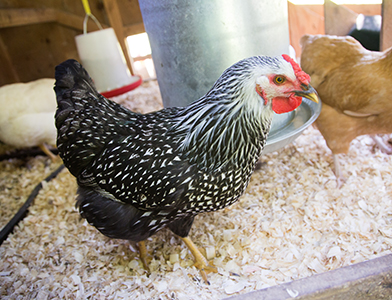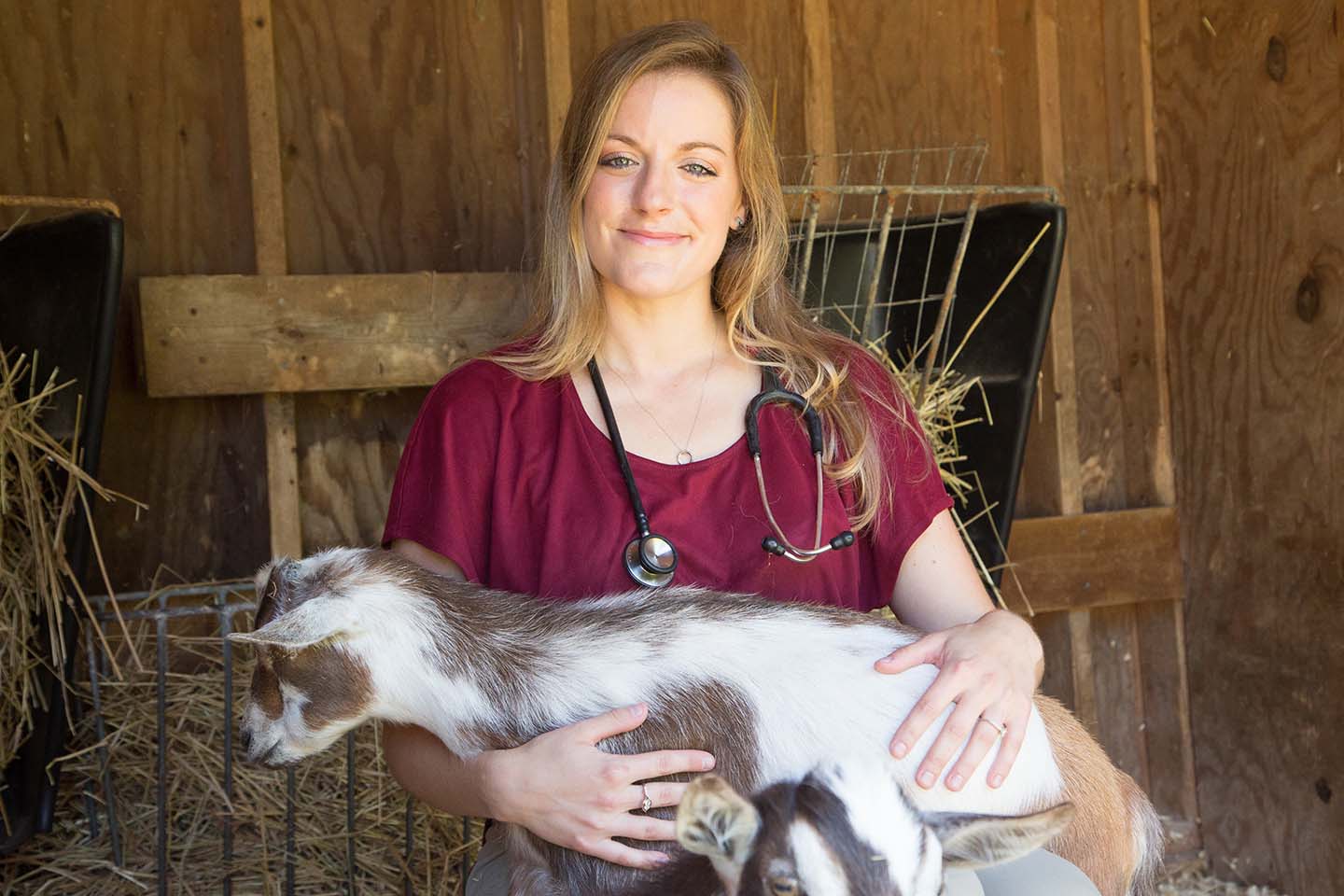Press Release
All for One and One for All: Animal Health Surveillance and the One Health Initiative
From September 2016 to August 2017, a virus inadvertently transmitted from puppies in a chain of pet stores sent 39 people to hospitals across seven states. But the size or even the unexpected source of the outbreak didn’t concern health officials as much as the fact that it took nearly a year after the first reported case for a pattern to emerge.
This is exactly the kind of problem Kari Meidenbauer, of the Johns Hopkins University Applied Physics Laboratory (APL) in Laurel, Maryland, is investigating as part of her work in animal health surveillance at APL. As the Lab’s sole animal health analyst and veterinarian — she works part-time at the Hickory Veterinary Hospital in Forest Hill, Maryland — Meidenbauer understands the significant role that animal health plays alongside human health and the environment as factors in spreading disease.
Researchers know that zoonotic diseases — illnesses transmitted from animals to humans — are the culprit behind most of the outbreaks that circled the globe over the last decade. First monkeys, and then bats, were discovered to be carriers of the deadly strain of Ebola that killed thousands of people between 2014 and 2016. Mosquitos are behind the Zika and West Nile virus, while birds carry avian flu.
As part of the One Health initiative, animal health is increasingly gaining focus as a marker for predicting health epidemics among the human population. Meidenbauer studies existing data to detect patterns but realizes that animal health data collection is not nearly as robust or on the same scale as human health surveillance. Meidenbauer points out the major gaps in animal health surveillance, noting that animal and human health surveillance should be integrated and data collection done in real time.
She presents an analogy to highlight her point: Say the cows on a dairy farm are carrying salmonella. The bacteria contaminate the raw milk, which is consumed by people in the nearby town, who fall ill. The cows’ waste runs off to the river near the dairy farm. More animals and humans are sickened from drinking and swimming in the now contaminated water, continuing the cycle and spurring a potential epidemic.

Credit: APL
Being able to rapidly identify and isolate illness in the town’s dairy cow population could have curbed the spread of infection and potentially kept it from reaching humans and contaminating the surrounding environment, she said. Animal health is very much intertwined with human and environmental health.
“You can’t tackle public health until you capture and consider all three areas,” said Meidenbauer. And APL has recognized the need to address these new research spaces.
APL deployed the Electronic Surveillance System for the Early Notification of Community Based Epidemics (ESSENCE) after Sept. 11, 2001. The Lab-developed electronic disease surveillance system can detect disease patterns and outbreaks in large populations, and Meidenbauer envisions integrating animal data into the mix. Current animal-health data is scattered and you really have to look to find it, she said, and aggregating it into something like ESSENCE would provide better and more effective surveillance.
Meidenbauer seeks to work on a pilot with one of the nation’s largest poultry suppliers. Because of its size, an animal-borne illness could potentially cripple the industry and widely impact human health.
“How can we take wildlife data and combine it with domestic animal influenza data and our [human] influenza data to compare?” said Meidenbauer. “It’s important to find new avenues to enhance existing capabilities.” Better and more consistent surveillance, she added, will help public health officials — and APL can be the vehicle for this level of communication and culture change.
Meidenbauer is passionate about forging relationships with these types of industries in the pursuit of more transparent surveillance to promote One Health efforts. Her appreciation for public health started when she was young, as the daughter of a nurse. Meidenbauer grew up to become a health professional in her own right, as a veterinarian. She spent her college years in a program that allowed her to focus on public health, for applications beyond traditional veterinary medicine. Now, she has the best of both worlds, working as a vet when she’s not at the Lab and living on a farm with her many pets, including — count them — five goats, two pigs, 17 chickens and two dogs.
